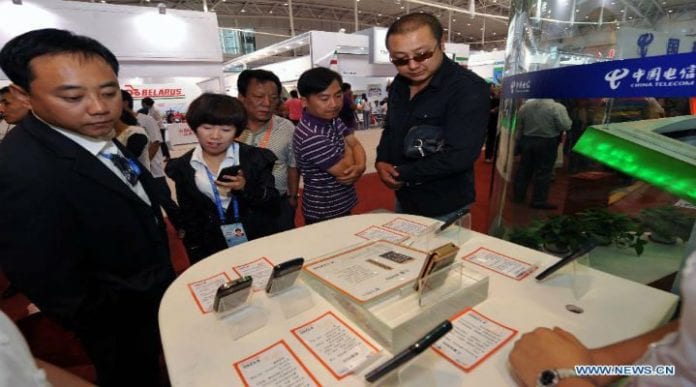China Mobile continued to pad its lead as the world’s largest mobile operator, announcing it added more than 8.5 million net customers during the third quarter, pushing its total customer base to just under 800 million subscribers. While robust in any sense of the word, that growth was actually a bit of a slowdown for the carrier compared with the first half of the year in which it added 23.4 million new customers through the first two quarters.
The carrier’s next-generation services powered its most recent growth spurt, with China Mobile adding more than 27 million net “4G” customers to its recently launched TD-LTE service, which received a pricing boost earlier this year. That network served nearly 41 million customers at the end of the third quarter. China Mobile’s TD-SCDMA-based 3G service attracted nearly six million net customers during the most recent quarter, pushing that network’s total customer base to 244.46 million subscribers.
While data usage across its network surged by more than 98% during the first nine months of this year compared with 2013, average revenue per user dipped from $10.45 per month during the first six months of this year to an average of $10.29 per month for the first nine months. That helps suppress operating revenues to just a 3.9% increase during the third quarter, with earnings before interest, taxes, depreciation and amortization falling 5% during the quarter.
–China Mobile also recently announced the completion of an international roaming voice over LTE call with Dutch-based KPN and its subsidiary IBasis. The test included equipment from Chinese vendor Huawei and was based on “IMS local breakout architecture with home routing solution.”
China Mobile is reportedly looking to rollout VoLTE services later this year.
The move to VoLTE is expected to allow wireless carriers to transmit voice traffic more efficiently and eventually shutter legacy 2G and 3G networks that are currently burdened with carrying all voice traffic and a good portion of data traffic. Analysts noted in an RCR Wireless News report last year that carriers could achieve up to 40% more spectral efficiency running voice traffic over their LTE networks compared with legacy systems.
–Sprint is looking to steal some of the spotlight from the impending commercial launch of Apple’s latest iPad devices, announcing it will waive the $10 per month “access” fee through the end of 2015 for customers adding one of the new iPads to one of the carrier’s Family Share Pack plans. The carrier also announced a new entry-level, stand along tablet plan to provides 100 megabytes of cellular data for $10 per month.
Apple last week unveiled the latest updates to its iPad line, including the iPad Air 2 and iPad Mini 3. The devices are the first tablets from Apple that support Sprint’s 2.5 GHz-based Spark network, which promises download speeds in excess of 50 megabits per second. The devices also allow for customers to switch between AT&T Mobility, T-Mobile US and Sprint cellular coverage using a single SIM, which could force carriers to more aggressively try to maintain customer loyalty.
–SK Telecom continued its push into the “5G” space, announcing a partnership with neighbor Samsung Electronics to work on joint research for developing the technology.
The memorandum of understanding calls for both companies to cooperate on sharing a “5G vision with standardization groups and technology forums in and out of” South Korea, select frequency bands suitable for the development and implementation of 5G technology; pool research and development work on the technology and use of small cells; multiple-input, multiple-output; and “next-generation modulation/demodulation” technology.
The companies did acknowledge that the work will begin despite there not being an agreed upon standard for 5G, though they expect it to include services that support “1,000-times more data capacity as LTE at speeds higher than one gigabit per second per user over a densely-connected network.” The International Telecommunications Union, which is the official arbiter of technology generations, had stated that the 4G standard, which marketing departments like to affix to current LTE deployments, is to support “enhanced peak data rates to support advanced services and applications of 100 megabits per second for high mobility and 1 Gbps for low mobility.”
SK Telecom has announced a number of 5G-related initiatives with equipment vendors, including a deal with Ericsson to conduct joint research on “5G-related technologies” geared toward demonstrating 5G services during the 2018 Winter Olympic Games scheduled to be held in Pyeongchang, South Korea. As part of the agreement, the two companies cited what they termed “essential” technologies for the move to 5G services, including “next-generation small cell, ultra-wideband,” low latency technology of one millisecond geared toward remote driving, FDD/TDD convergence technology and gigabyte-level data transmission technology.
Additional carrier news can be found on the RCR Wireless News “Carriers” page.
Bored? Why not follow me on Twitter

